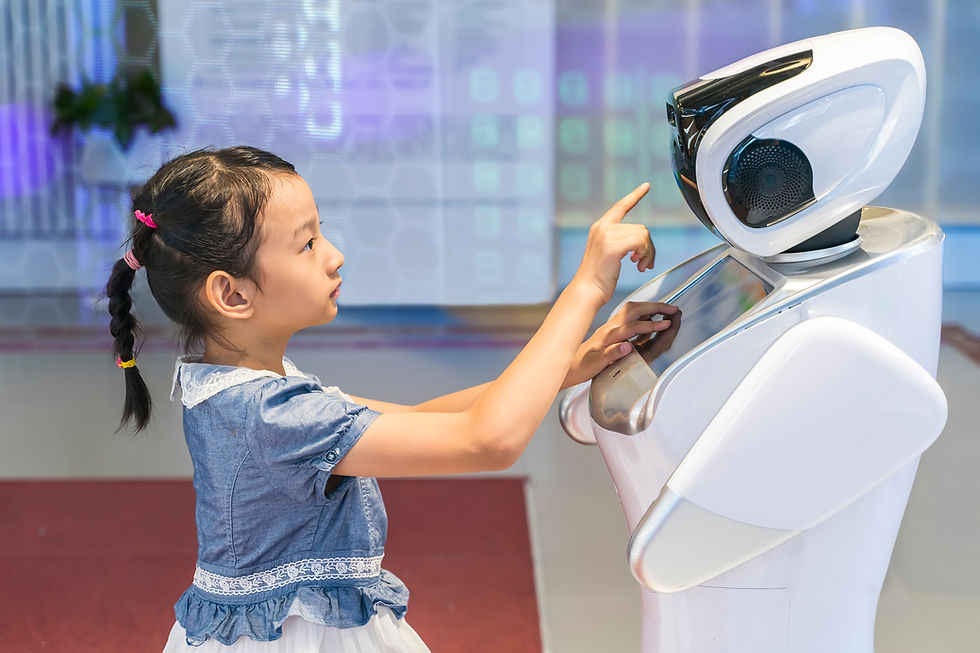How a robot helps children with autism understand others better
- Gert de Heus

- Aug 24
- 3 min read

Imagine: a child with autism learning social skills by talking to a robot. Sound like science fiction? It's not!
A new study from Italy shows that a humanoid robot—iCub—can truly help children with autism better understand what others are thinking and feeling. This is what we call "Theory of Mind" (ToM), a key component of social communication.
What is Theory of Mind?
Theory of Mind means understanding that other people have thoughts, feelings, and desires that differ from your own. This is challenging for many children with autism. They find it hard to assess what someone else is thinking or feeling. This can sometimes make social situations confusing or stressful.
What did the researchers do?
The researchers worked with 32 children with autism, average age 7.5. They compared three types of therapy:
Standard therapy : such as behavioral therapy (ABA), speech therapy, and social skills training.
Robot training : Children practiced social situations with the iCub robot.
Human control training : the same exercises as with the robot, but with a therapist instead of a robot.
The children role-played in mock cafes and cinemas. They learned, for example, how to place an order, how to respond to a request, and how to tell what someone wants.
What came out?
The results were striking:
Children who practiced with the robot showed significant improvements in their social skills.
Children who received only standard therapy showed no short-term improvement.
Children who did the same exercises with a human instead of a robot also did not improve.
In short: it wasn't just the exercise that helped, but really the robot itself.
Why does a robot work so well?
Predictability : The robot always does the same thing. That's reassuring.
No judgment : Children feel less watched or judged.
Fun interaction : The robot moves, talks and reacts in a friendly way.
Therapists noticed that children stayed focused longer and had more fun during the robot training.
What does this mean for parents and therapists?
This study shows that robots can be a valuable addition to existing therapies. They don't replace therapists, but they can help teach certain skills faster and in a more enjoyable way. This can be a valuable addition, especially for children who respond well to technology.
What now?
The researchers want to further develop this type of robot training and test it with other robots. They hope that these types of therapies will become more widely available in the future – even outside of laboratories, in regular treatment centers.
Want to learn more about robot therapy or have questions about how it works in practice? Let us know at autismeportaal.nl – we're happy to help!
Theoretical Framework: Robot Therapy and Theory of Mind in Children with Autism
1. Autism and social cognition
Autism Spectrum Disorder (ASD) is a neurodiverse developmental disorder characterized by impairments in social communication, repetitive behavior, and difficulty understanding social cues. A key component of social cognition is the ability to understand the thoughts, feelings, and intentions of others – also known as Theory of Mind (ToM).
Children with ASD often struggle with ToM tasks, such as recognizing emotions, understanding social rules, and assessing what others are thinking. This hinders their ability to communicate smoothly and build relationships.
2. Traditional interventions
Many existing interventions, such as Applied Behavior Analysis (ABA), focus on teaching social skills through structured exercises and reward systems. While ABA is effective in the long term, the exercises are often repetitive and can be stressful for children who are sensitive to unexpected stimuli.
In addition, ToM training is often conducted using puppets, cards, or role-playing with therapists. These methods sometimes lack the dynamism and predictability that children with ASD need for optimal learning.
3. Robot therapy as an innovative approach
Social robots, such as the iCub, offer a new way to learn ToM skills. They combine human characteristics (such as facial expressions, eye contact, and gestures) with technological advantages:
Consistency : Robots always respond in the same way, which provides predictability.
Adaptability : Robots can be programmed to adapt exercises to the child's level.
Engagement : Children often like robots and therefore stay focused longer.
According to social-cognitive learning theories (such as Bandura's), children learn through observation and imitation. Robots can serve as safe, nonjudgmental models that demonstrate social behavior.
4. Research substantiation
The study by Ghiglino et al. (2025) shows that robot therapy leads to significant improvements in ToM skills in children with ASD, as measured by the NEPSY-II test. Compared to standard therapy and a human control group, children who worked with the robot scored higher on tasks such as perspective taking and intention recognition.
These results support the idea that robot therapy is not only a nice addition, but can also be an effective tool within existing treatment programs.




Comments